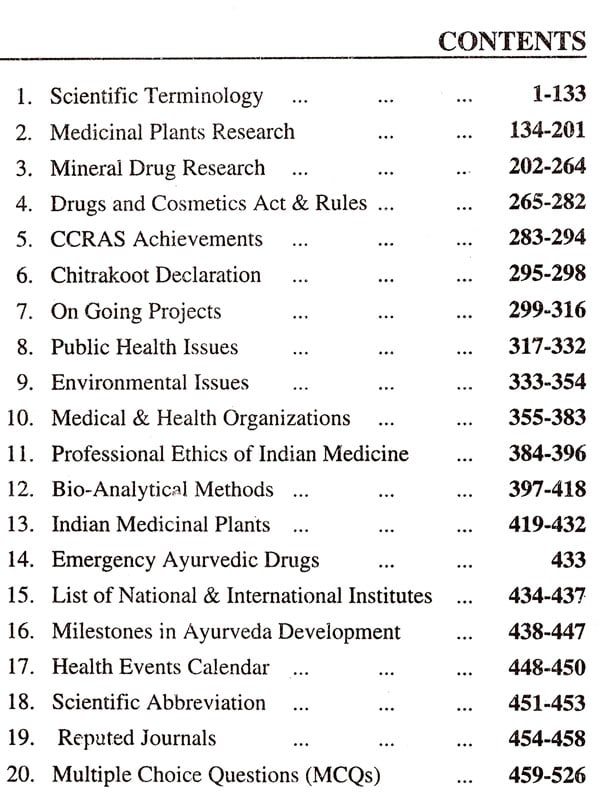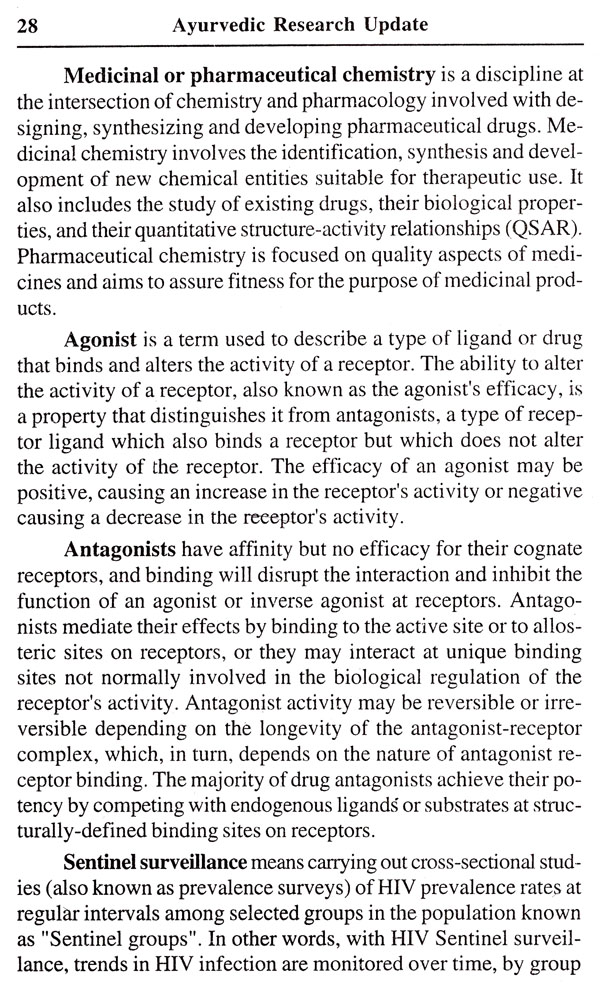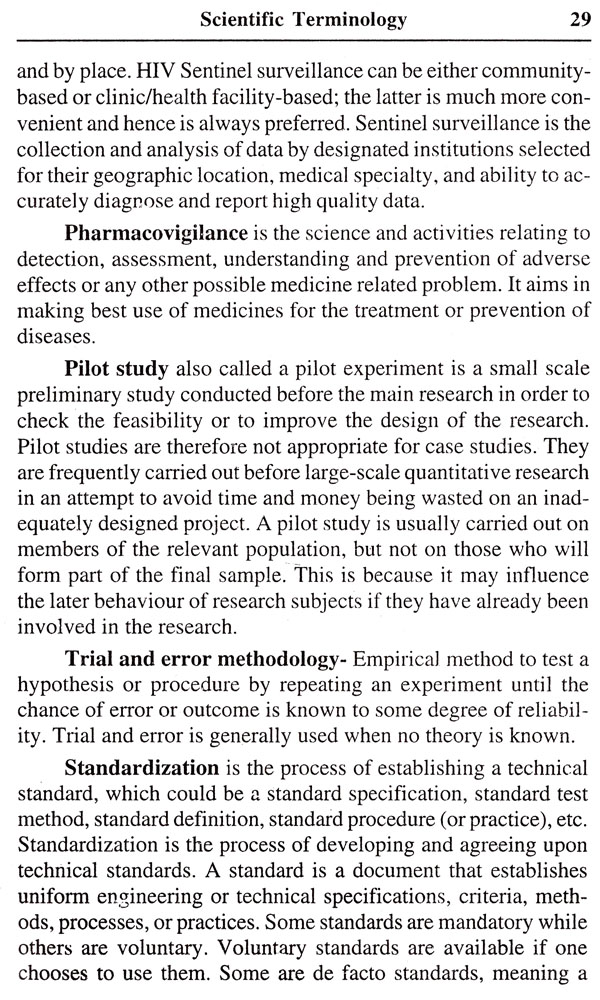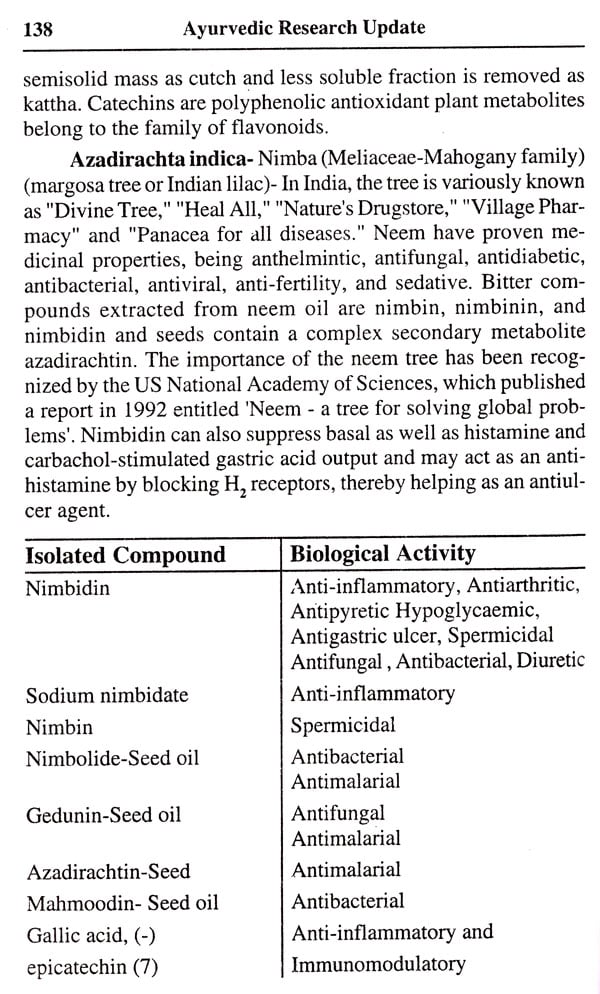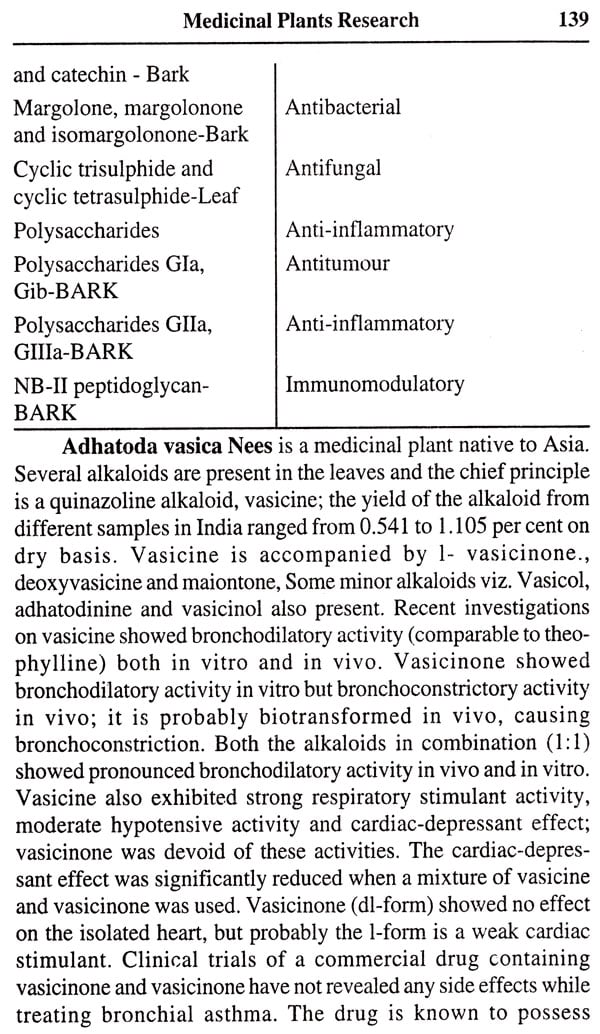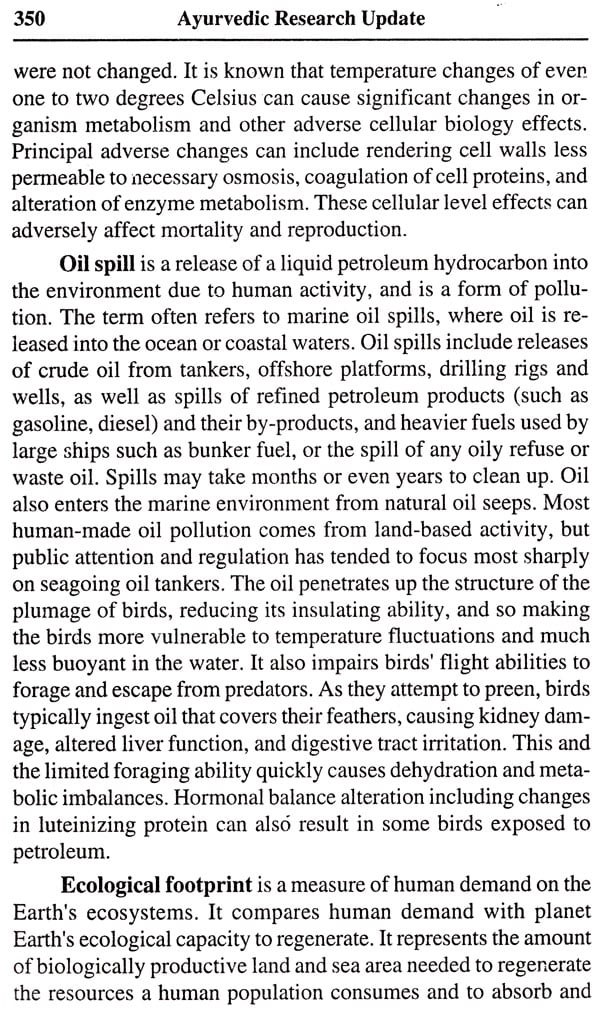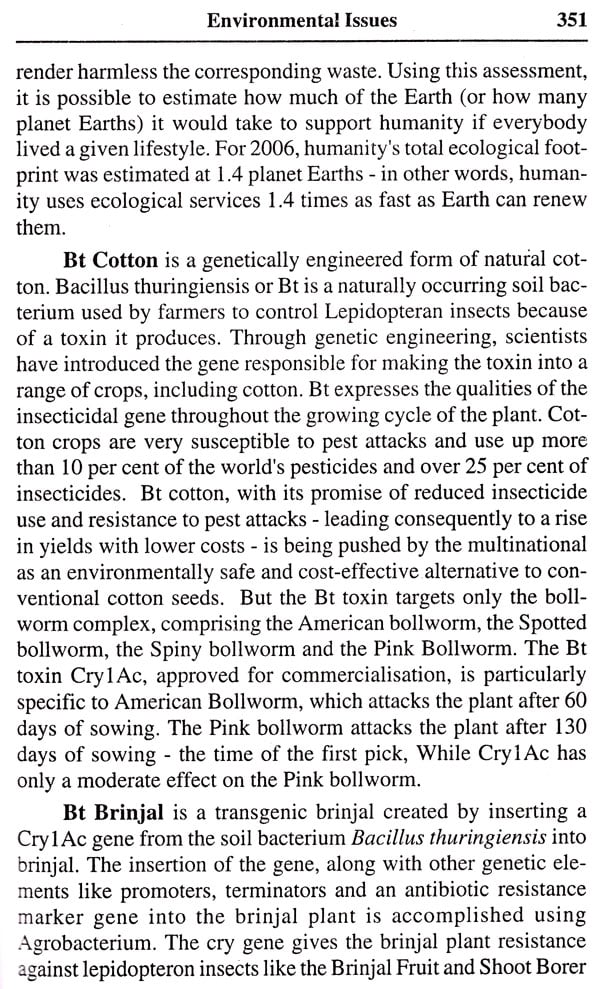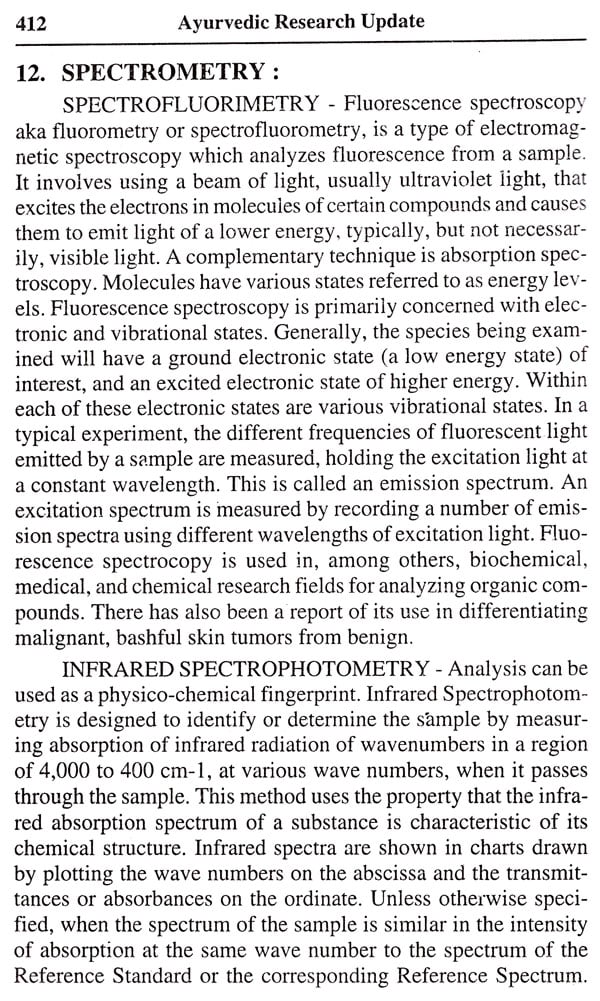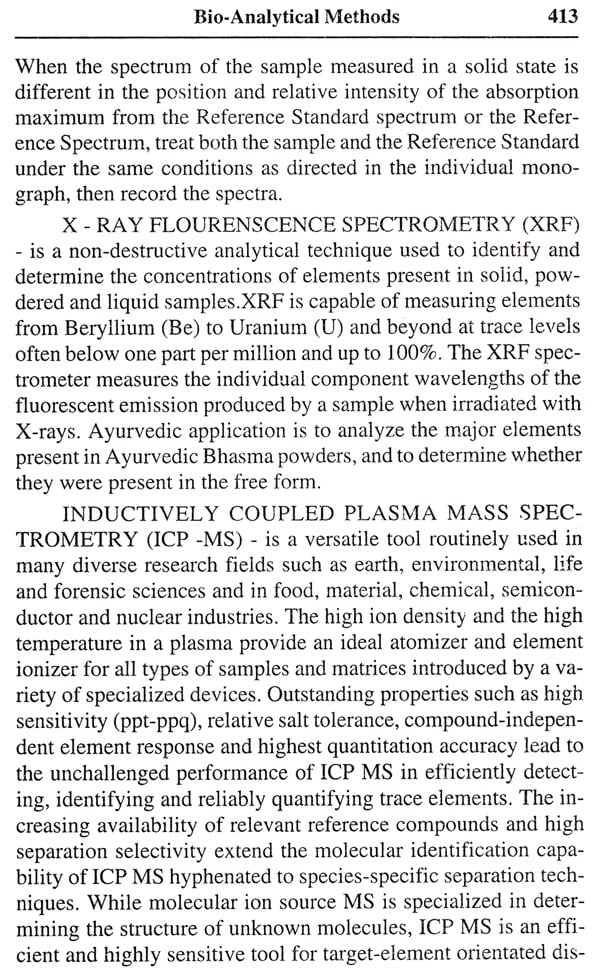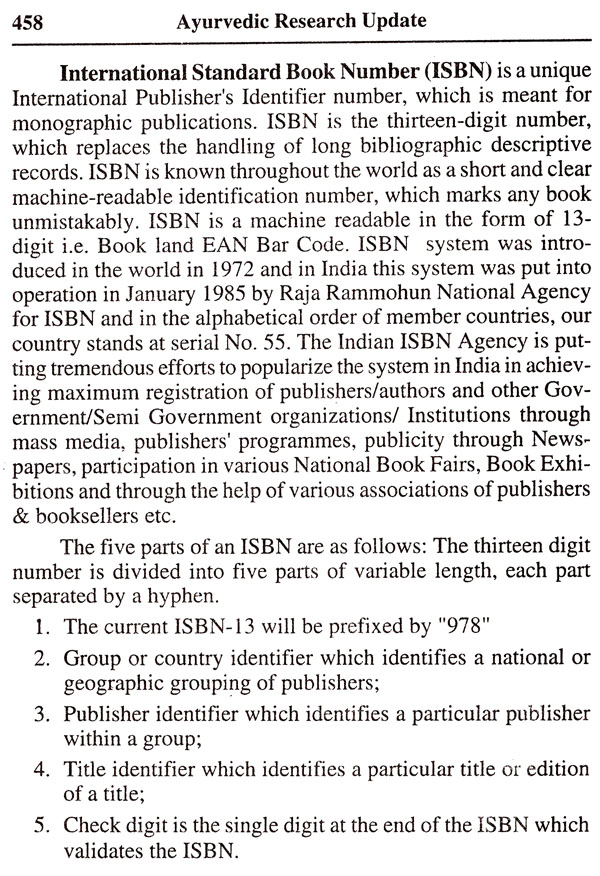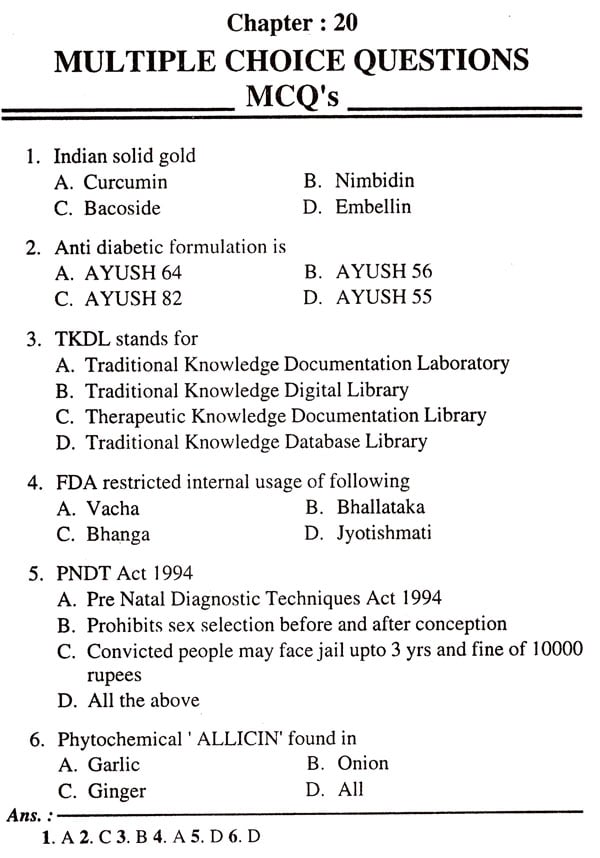
Ayurvedic Research Update
Book Specification
| Item Code: | NAU963 |
| Author: | Dr. Sathya N. Dornala |
| Publisher: | CHAUKHAMBHA ORIENTALIA, Varanasi |
| Language: | English |
| Edition: | 2011 |
| ISBN: | 9788176372312 |
| Pages: | 526 |
| Cover: | HARDCOVER |
| Other Details | 9.00 X 6.00 inch |
| Weight | 740 gm |
Book Description
Once the amalgamation of Ayurveda & the latest developments in the different sciences is done, the perception and output of centuries old Science and Art of Ayurveda will be enhanced, fortified, as per the current needs of the society. The output of the system would definitely benefit the society and the mankind. As a thread is needed to garland together a number of flowers and so is this compendium compiled by us for stringing together the various research updates and current health issues.
While reading the First chapter on Scientific Terminology, reader may feel that the terms are not given in alphabetical order, had it been done accordingly then the terms of same subject are getting scattered, hence different terms of the same topic are given in series. For easy reference Alphabetical index is given at the beginning of the chapter. Scientific terms selected are like Personalized medicine, Biopiracy, Translational research, Intellectual property, Pharmacovigilance etc., we come across frequently in journals, discussions etc.,
Second chapter on Medicinal Plants Research - Reader should note that information on each medicinal plant is given in a separate paragraph and alphabetical order of scientific names. Third chapter entitled Mineral Drug Research - Today even in Modern Medicine many minerals are been included to the list of 'Supplementation Drugs'. In Ayurveda too many Metals and Minerals are mentioned in 'Therapeutics' which in present day context is simulating with the principles of 'Nano-Medicine'. Still some of us & Contemporary Health Care Practitioners are in misconception that use of Rasa-oushadhis are hazardous; this is my sincere attempt to make them get aware of the latest ongoing developments in this field and meanwhile justifying themselves and the educated patients.
Fourth chapter entitled Drugs and Cosmetics Act and Rules. It is essential to one and all related to the field, because in the recent years many amendments were made in this section. For example Shelf life, Artificial Sweeteners, Recipients, Heavy Metal Limits etc.
Fifth chapter covered about the apex research body CCRAS regarding its milestones, contribution of various research drugs, and its patents and about upcoming and ongoing projects.
Seventh chapter titled Ongoing projects covered about different projects like GTP, TKDL, NRHM, EMR, NMMP, National Campaigns, SIA etc., until unless objectives of the programmes are not understood in a proper way, then the implementation and thereby the outcome will not be fruitful, in turn it reflects on future projects.
Chapters entitled Public Health issues, Environmental Is-sues and Medical and Health organizations - these are interrelated. It is essential to know routine, changes and about newly introduced public health programmes and various outbreaks like swine flu, bird flu, chikungunya etc., and National and International environmental issues on El Nino effect, Kyoto protocol, Copenhagen meet etc., and the role of many organizations in Global healthcare.
Twelfth chapter on Bio analytical methods is to make our fraternity to know about the utility of different methods in relation to Ayurveda, out of the vast material available on different instruments.
a Chapters titled Chitrakoot Declaration, Professional ethics of Indian Medicine and Milestones in Ayurveda development are given to provide kind information to all.
Chapter entitled Health events Calendar is given to know the importance of calendar days thereby practitioners can focus their practice giving due importance to such conditions, policy makers can notify intervention of ayurveda in such conditions through advertisements, and the Teaching hospitals can utilize this opportunity to increase their patient flow.
Chapter 19 on Reputed journals is also a very important part of this book. Most of us are not aware of the journals which publish data related to Ayurveda and allied healthcare systems. Particularly during this year many new journals are released into the market like IJAR, JAIM, etc., It is essential to go through the content published in the journals, so as to be in tune with the ongoing scientific transformation.
While copying the information, I have checked with sources believed to be reliable and which is acceptable with standards at the time of this publication. However there is a possibility of human commuter and typographical error. Suggestions and criticisms are invited to incorporate them in future issues. At the last, I pray almighty to provide me health, courage, energy and wisdom so that I could walk few steps more.
Updation with current knowledge and advancements in science & technology is the need of the hour for every professional. We all know that Ayurvedic principles are very much scientific, but seem heretical to the present scientific community because this science is not explained in the language and terminology they understand. Thus, Ayurveda, for that matter, although is an oriental life science with sound principles and concepts, it can be well appreciated and applied when explained in modern scientific terms. This can facilitate easy understanding by everybody and can contribute for progress of science.
There is increasing global interest in theories and applied aspects of Ayurveda for its never changing principles, and providing natural drugs for many health conditions, where the conventional western medicine has less to offer, besides side benefits. Non-rusting iron pillar at Qutub Minar is as true as is the steel that is being used in the present day extreme engineering. Similarly nano- technology is not new to Ayurveda. Conversion of metals and minerals to bhasmas (nano-particles) is known to Ayurveda thousands of years ago. But many Ayurvedic professionals are not familiar with terminology used these days. In order to keep pace with current advancements and undertaking research in Ayurveda, knowledge of modern science is considered essential. Application of Prakriti (ayur-genomics) coupled with modern science can be a unique approach in finding solutions to many health challenges of the present day like diabetes, heart disease, Alzheimer's disease, cancer. The Government has also initiated planned, programmed, periodical training of Ayurvedic personnel with latest advancements and research outcome in different areas together with re-orientation of concerned subject to facilitate them to offer qualitative professional services in the fields of education, research and health care. Preparation of text books with comprehensive information on Ayurveda and modern science is essential for keeping Ayurvedic students and doctors to be part of world of growing scientific temperament. Further, it is necessary to initiate the young Ayurvedic professionals apply their knowledge with support of modern science, so that the Ayurvedic science is better accepted through-out the world, equally well by general public as well as scientific com-munity, without frustrating other contemporary medical systems.
This comprehensive book titled 'Ayurvedic Research Update' is an attempt in this direction with all the scientific information essential for better understanding of Ayurveda. This is that what is expected and included in various training programs. The information available scattered in many books, journals, seminars and workshops proceedings is pooled at one place. Besides detailing various related scientific terms, the authors have compiled the research data on plants, metals and minerals, the raw materials used in manufacturing of medicines in Ayurveda, Siddha and Unani. The environmental issues, Medical and Health organizations, laws concerning medicine manufacturers & practitioners and analytical methods that are generally adopted for scientific testing are among other subjects dealt in this book.
I appreciate the efforts of the authors, Dr. Sathya N. Dornala and Dr. J. Snehalatha for having brought out this comprehensive book on research update specially designing for Ayurvedic professionals, and congratulate them for this achievement. May Lord Dhanwantari bless them to bring out many such useful books for the benefit of all concerned.
I hope the readers enrich their knowledge through this book for well appreciation, interpretation and application of Ayurveda in their professional life.
